Nicaragua – Some Random Thoughts
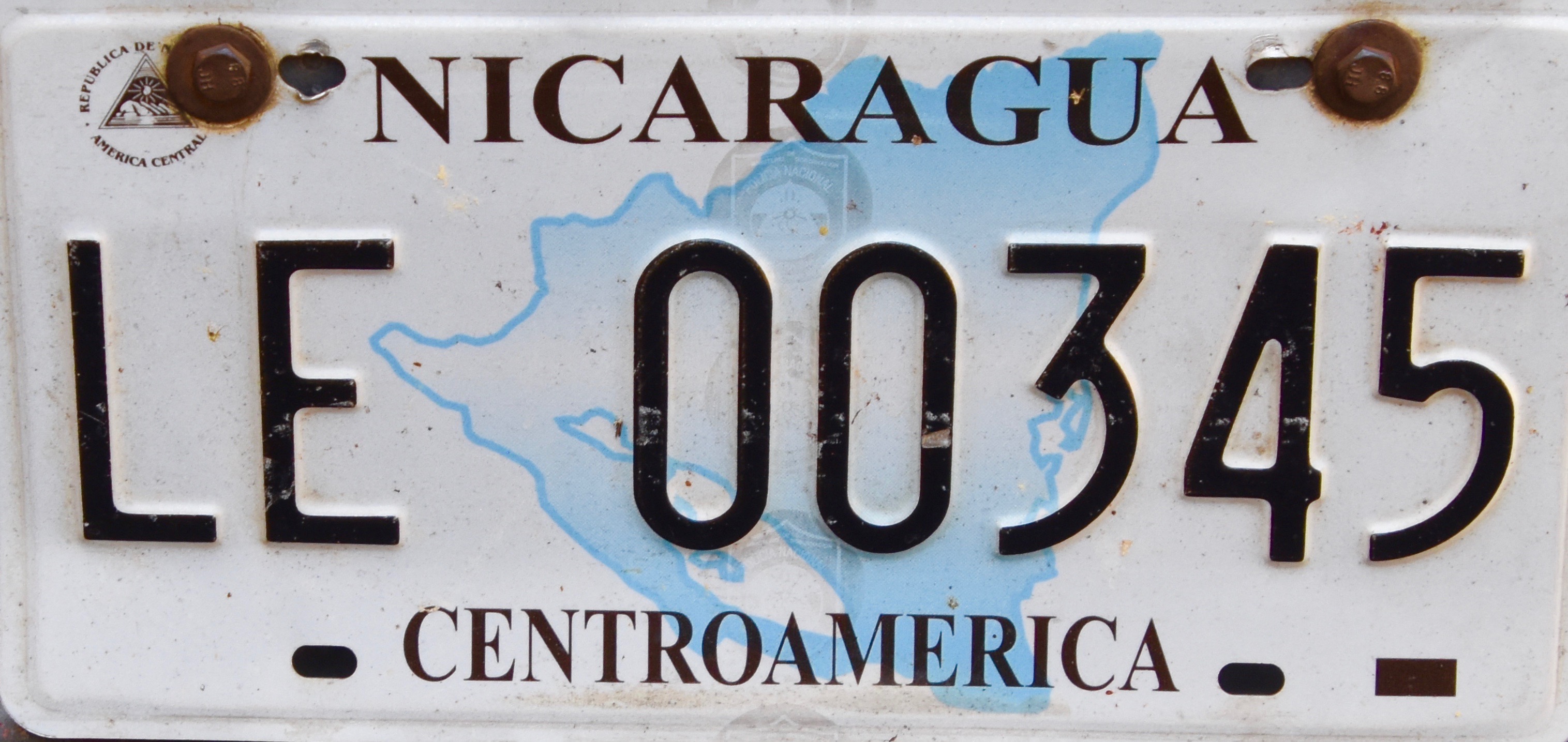
We have just completed the Nicaragua portion of Adventures Abroad’s Central America trip designed and guided by Victor Romagnoli who is one of the few people who has more than a passing interest and knowledge of this misunderstood country. While I will be writing specific posts about many of the places we visited in Nicaragua much as I just did with Costa Rica, e.g. Monteverde cloud forest I thought a general post about my impressions and random thoughts about the place might be a useful introduction. So here it goes in no particular order.
Nicaragua is a Police State
This is the harsh reality of dozens of countries around the world and the words ‘police state’ usually act as a deterrent to most tourists’ plans, unless they don’t. Canadians flock to Cuba by the millions and many more Americans would if they could, and the fact that it is a police state with the Cubans strictly under the thumb and control of the Castro family empire doesn’t matter a wit to them. Likewise Communist China, at least until Coronavirus, and many other popular destinations. So Nicaragua should not be written off on that account. The next question is.
Is it a Dangerous Police State?
A few years ago we did an Adventures Abroad trip to Colombia, Panama and Costa Rica with the option of going on to Nicaragua which at the time we put off for a future trip. Then in April 2018 Daniel Ortega, the Nicaraguan dictator announced plans to dramatically increase the cost of certain social programs including pensions. This set off an unprecedented level of protests, at least under the Sandinista regime. The response from Ortega, who once claimed to be a simple ‘man of the people’ was deadly – at least eighty people were killed and a crackdown every bit as severe as anything in the hated Somoza regime began. What was particularly vicious was the fact that many of those killed were done so by government snipers shooting high powered rifles from afar in places like the national baseball stadium in Managua.
Obviously you don’t bring tourists into volatile situations like this and Adventures Abroad has not had a tour enter Nicaragua since, until ours. The plans to enter Nicaragua were always tentative with Victor making the decision based on current happenings and not what transpired two years ago. Like it or not, Ortega and the Sandinistas, despite worldwide condemnation, are firmly in control and for now the population has been pacified, although subjugated is probably the better word. So the danger in Nicaragua has always been getting caught in the middle of some type of confrontation between the army or police and ordinary Nicaraguans. It is not from fear of gangs or other criminal activity. So it’s a go.
Entering Nicaragua
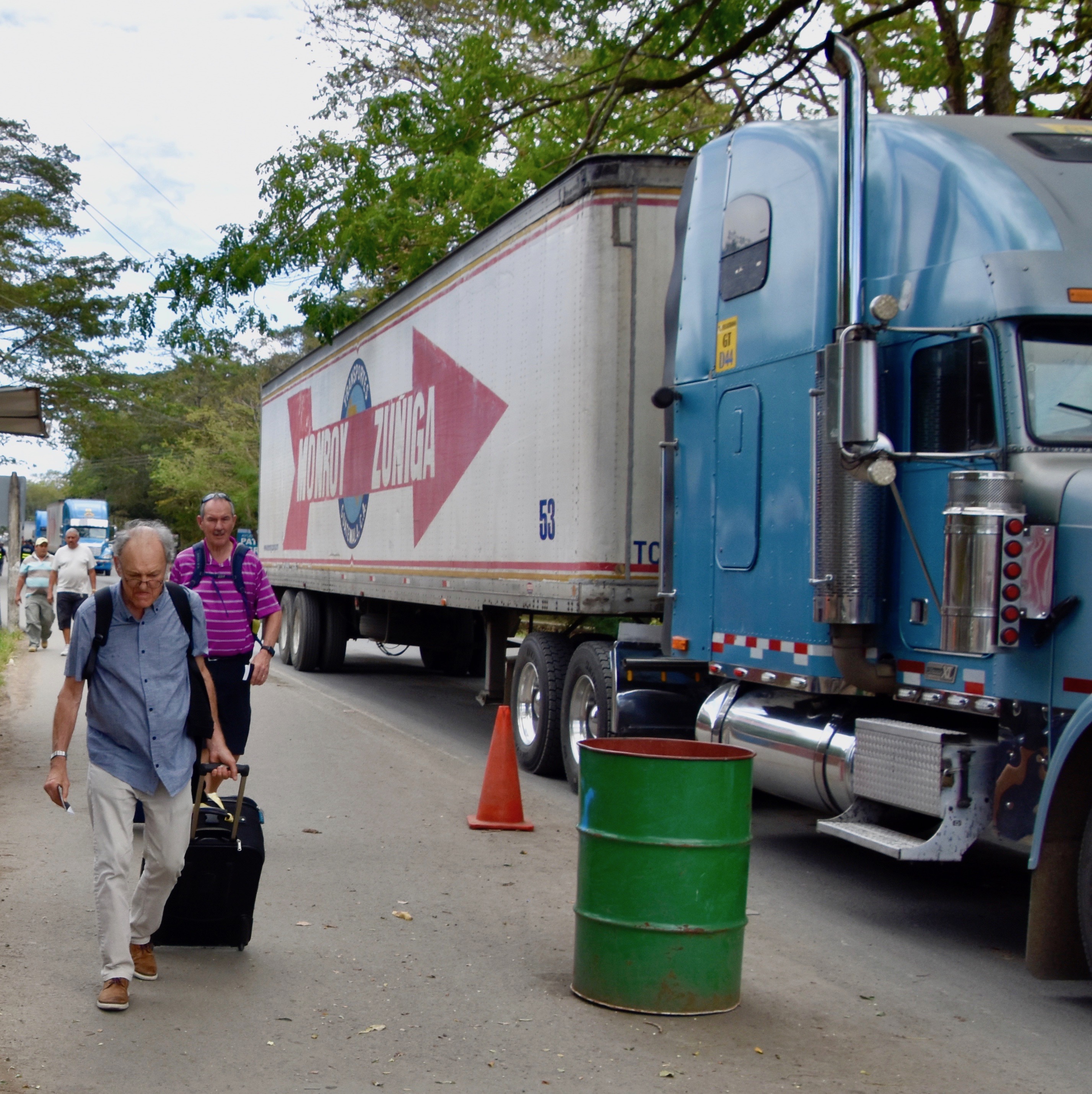
This will be the first time Alison and I have ever crossed a border by land in Central America. Based on our experiences in Africa in places like Zimbabwe and Botswana it could be interesting. The first thing that one can’t help but notice is the lineup of trucks waiting to cross. I’m not talking about an ordinary lineup, but one that begins well over ten miles (14.5 kms.) from the border. Apparently it can take over two days to make the crossing and the poor bastards driving those trucks need to stay awake the entire time or lose their place in line. Unfortunately that has led to tons of litter lining the roads – the first we’ve really noticed in Costa Rica.
Our bus driver and other savvy travellers know not to stop behind the trucks when you reach them, but to simply drive down the opposite lane, squeezing in when somebody comes the other way. After what seems like an eternity of driving past the trucks we reach the Costa Rican side of the border. Here we have to go to a hut to purchase a $9 USD departure voucher and then take it to the official customs office to get our passports stamped. After that you grab your luggage and walk across no man’s land like members of our group are doing in the photo above.
Once you turn around and see the Welcome to Costa Rica sign disappearing behind you, it is too late to turn back.
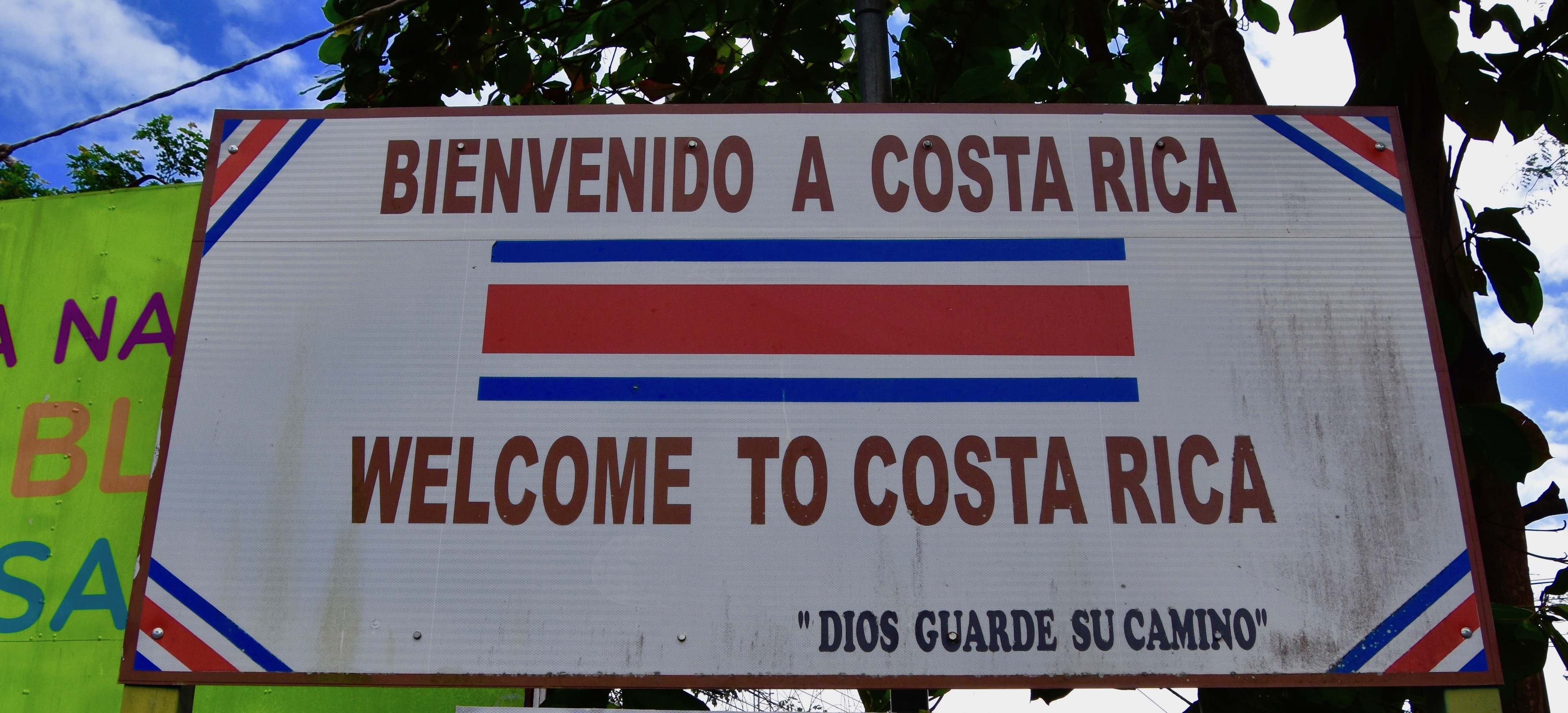
The first surprise is that there is no surprise. We just show our passports to an unarmed civilian who glances at them and waves us onward where our Nicaraguan guide Aura is waiting. She leads us onward to the modern customs office where she and Victor collect our passports and disappear for about thirty minutes. They then reappear, hand out the passports which have all been stamped and we head for our waiting bus. Not once do we ever get face to face with a customs official or fill out any forms.
Later I learn from Victor that long before we make this crossing that our names and passport info have been provided to the authorities in Nicaragua and they have tentatively approved our entry. Once at the border a call is made to Managua to confirm that we are still welcome and once that’s given we are free to leave.
Nicaragua is a Poor Country
Nicaragua is the second poorest country in the Western Hemisphere. It has a per capita GDP of $5,681 USD. Compare that to Costa Rica at $18,394 USD and Panama at $28,810 USD and you understand why Nicaraguans who flee their country don’t head north, but prefer to simply go to their southern neighbours where they perform most of the grunt work.
However, I’ve learned in my travels that being statistically poor does not translate into actual living in poverty and this is definitely the case in Nicaragua. If you come here expecting to see starving people with hollowed out eyes and distended bellies you won’t. Nicaragua produces a great variety of fruits, vegetables and grains, fish from the oceans and Lake Nicaragua and poultry and beef. This is what you might see for sale in a city market along with quite a few other things I’ll describe on my post on the Leon Market.
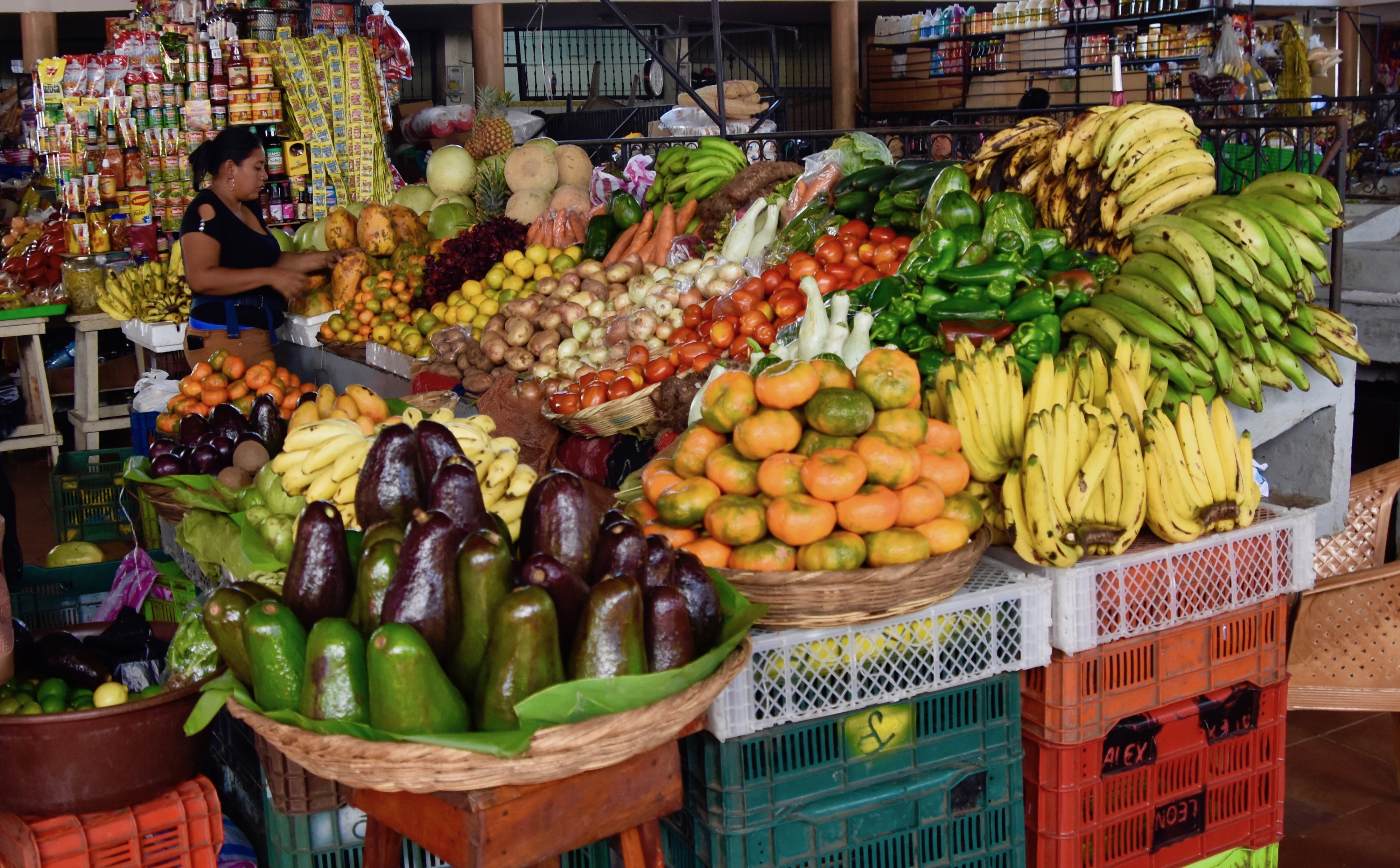
In the small towns and villages that make up a good percentage of the population local vendors provide the basics. And every family has rice and beans at least once a day if not more.
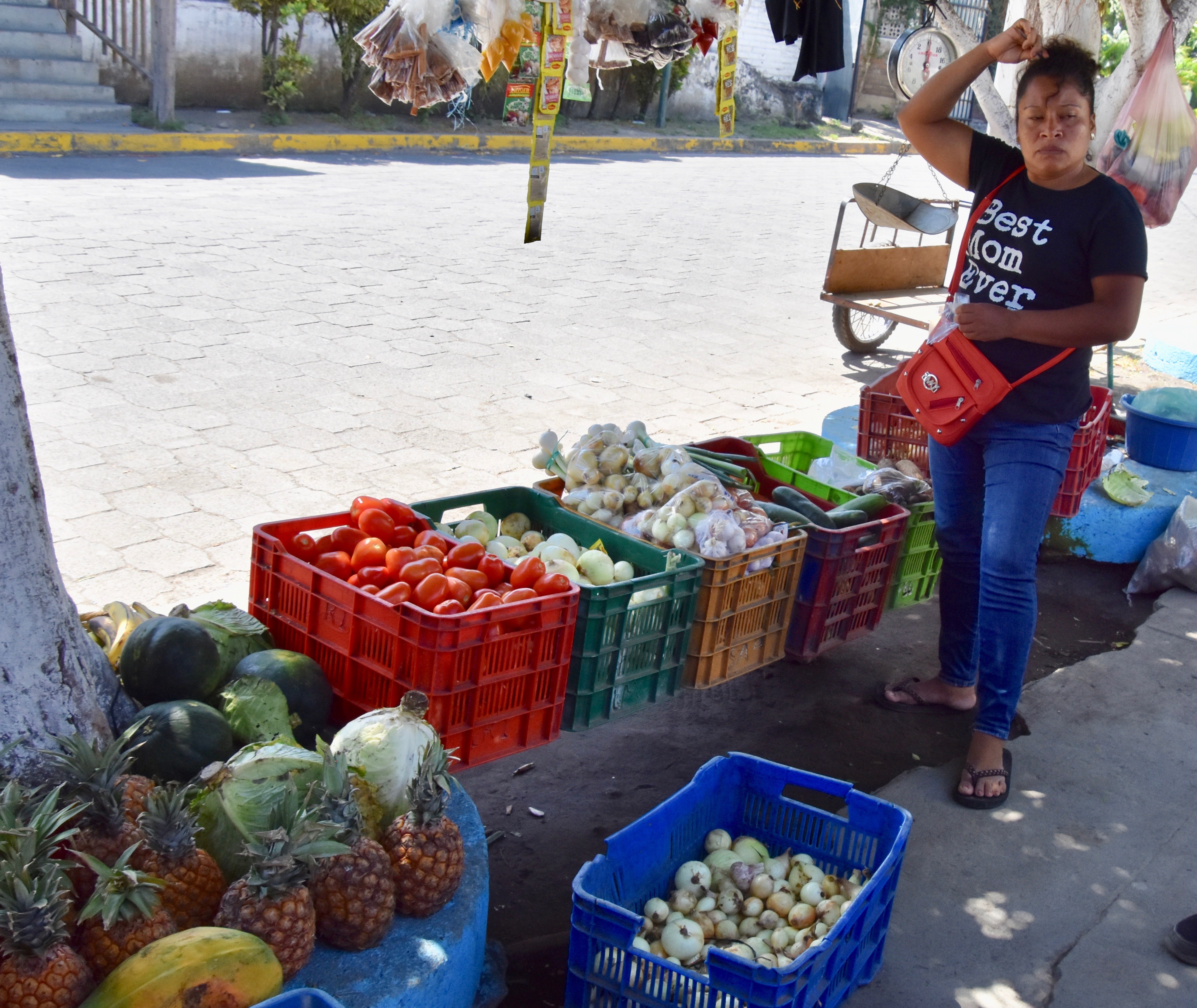
The bottom line is that a low GDP does not translate into malnuritionment in Nicaragua. Their diet is probably much more healthy than most North Americans.
Another tell tale sign of dire poverty is poor clothing, often filthy because of the inability to access clean water and soap for washing it. In Nicaragua the people take great efforts and pride in making sure their clothes are clean and in the case of school uniforms almost sparklingly white. These two children Alison photographed are typical of what we saw – spotless, at least until they get to the ice cream cart.
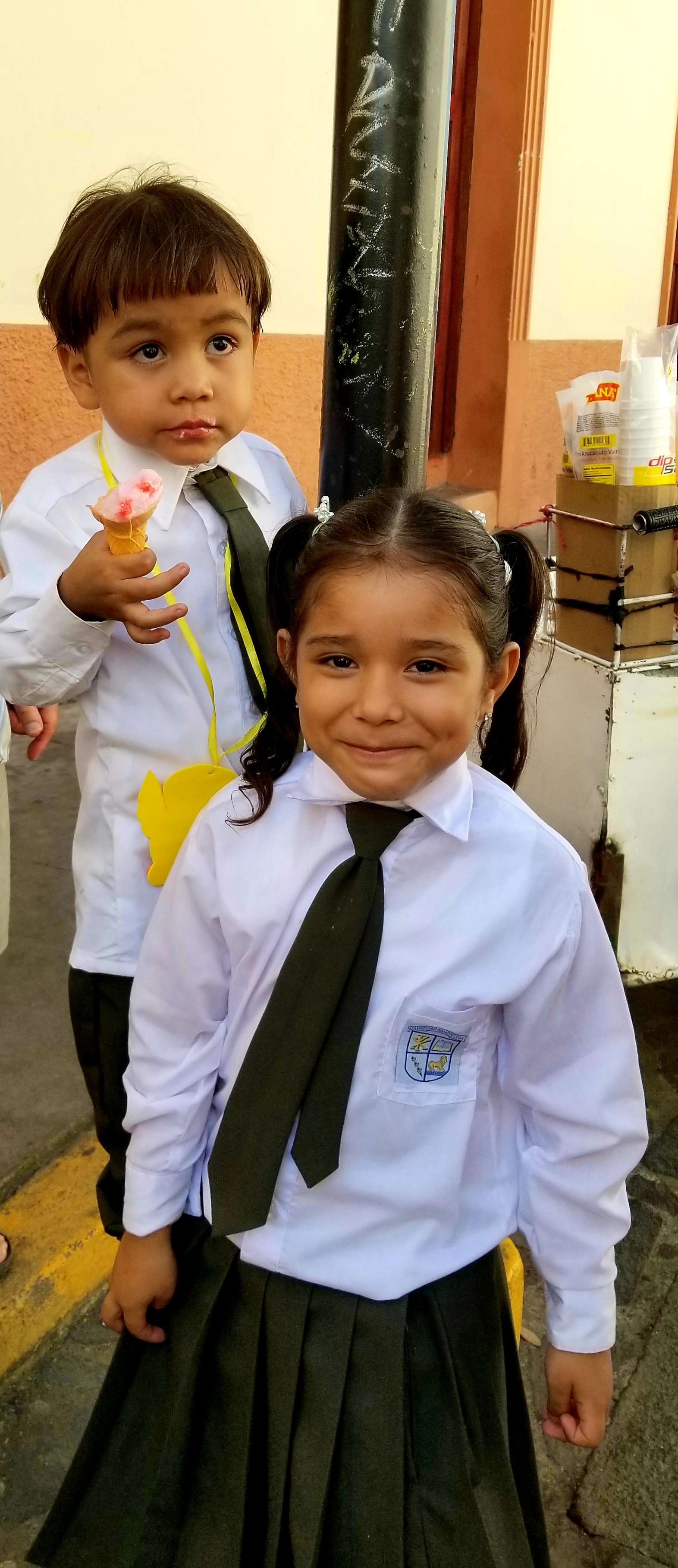
The one thing any visitor will notice is that the lack of money in rural areas means that methods of transportation and agriculture are definitely not up to 20th century standards, and that is not a slip of the computer keys. Horses are still a major part of the Nicaraguan economy, both for transportation and farm work. Here is a combination of both as this fellow is taking his plantain to market on horseback.
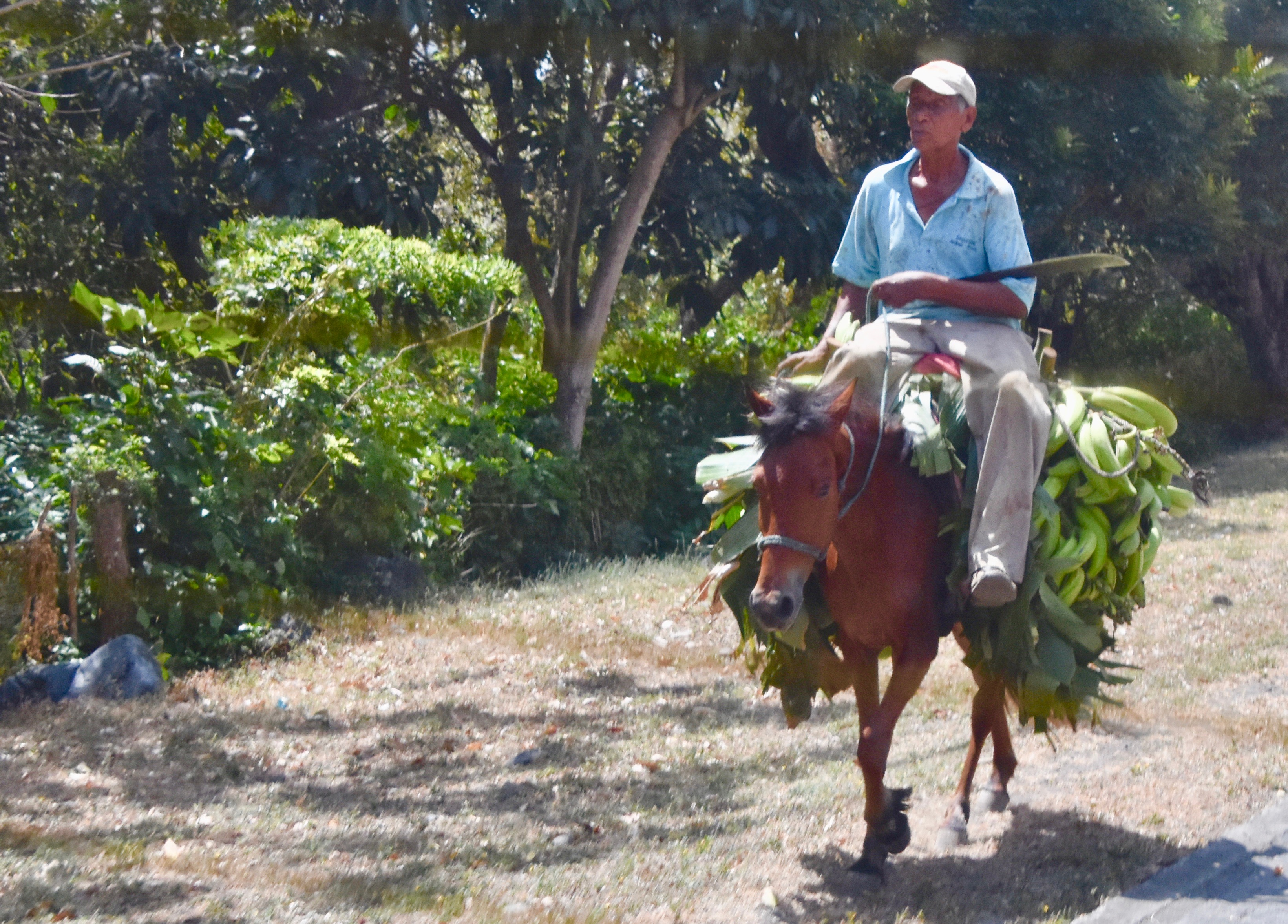
My home province has a tradition of using ox teams in the lumbering business, dragging the felled trees out of the woods to a sluice or awaiting wagon. Except that ended a century ago. Here in Nicaragua oxen teams are still in use.
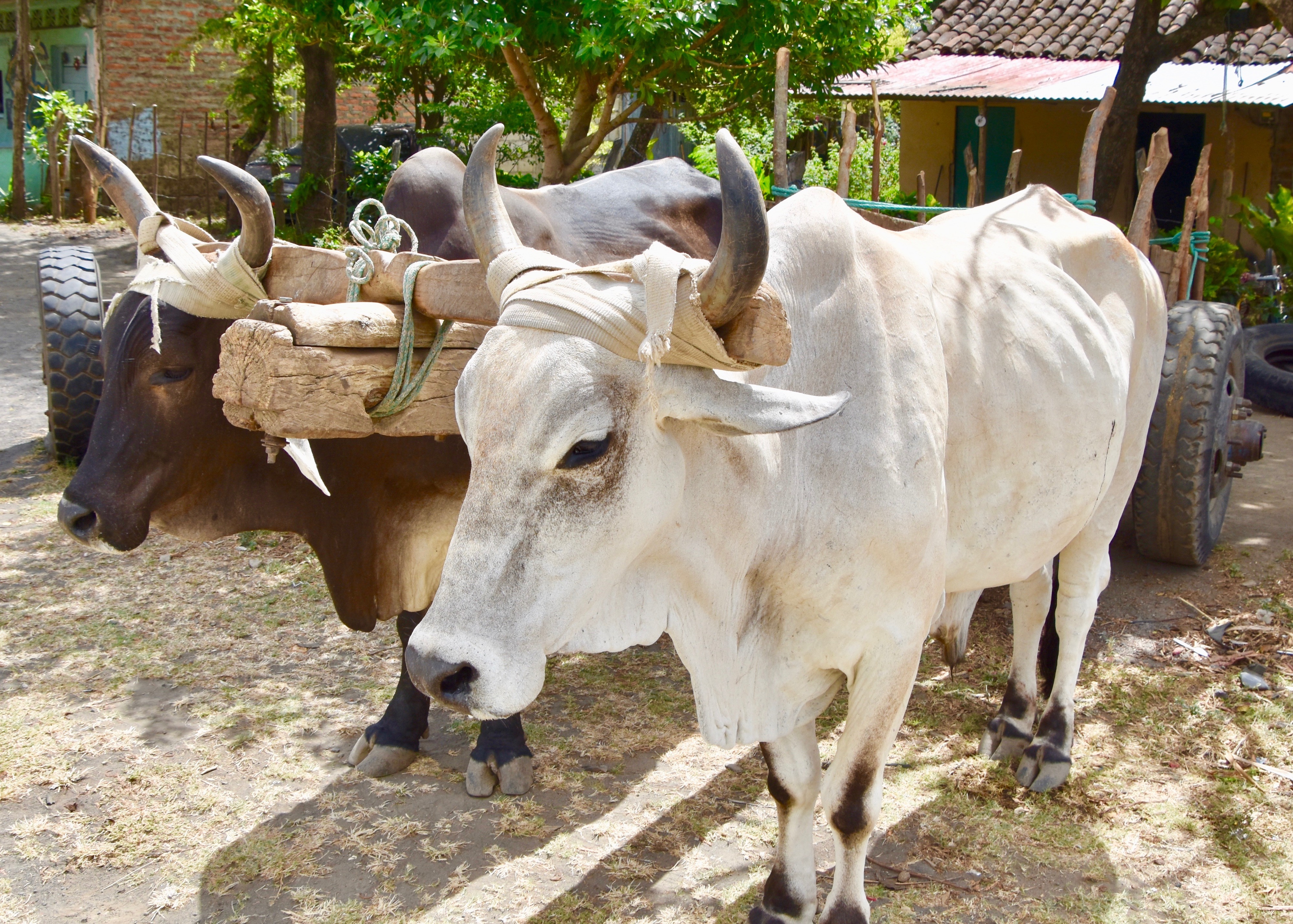
Need to build a structure quickly and don’t have a hand held saw, let alone a chainsaw? No problem, that’s what machetes are for.
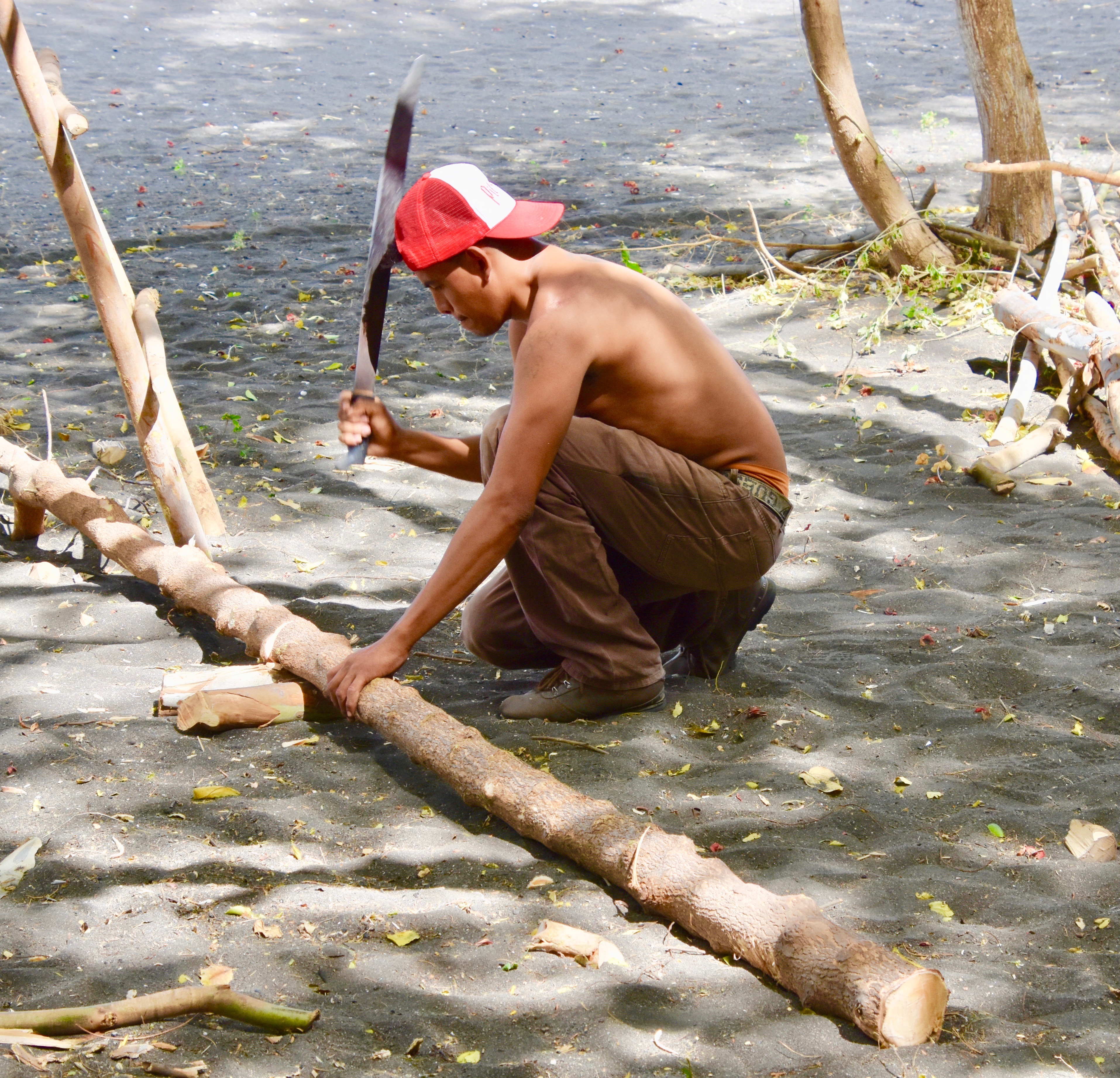
Let’s face it. As tourists we love to take pictures of these activities that we associate with not having the modern tools to do the job and are ‘quaint’. But the reality is that this is the way of life in Nicaragua. My mother’s forebears lived an agricultural life in the Annapolis Valley using oxen teams, horses and other methods of making a living that today we would call antiquated, but do I really think they lived a life of poverty or deprivation? Not for a minute and neither do I think the Nicaraguan people do today.
There are a few interesting ways of doing things in Nicaragua that we certainly wouldn’t get people in North America to do. This is a Granadian recycling operation. These guys pick up the bags of garbage that have not been sorted, rip them open and do the sorting on the go. Not a job you or I would sign up for, but these are actually government employees who earn a decent wage by Nicaraguan standards and get to keep whatever they can earn off the glass, plastic etc. they can sell to a recycler.
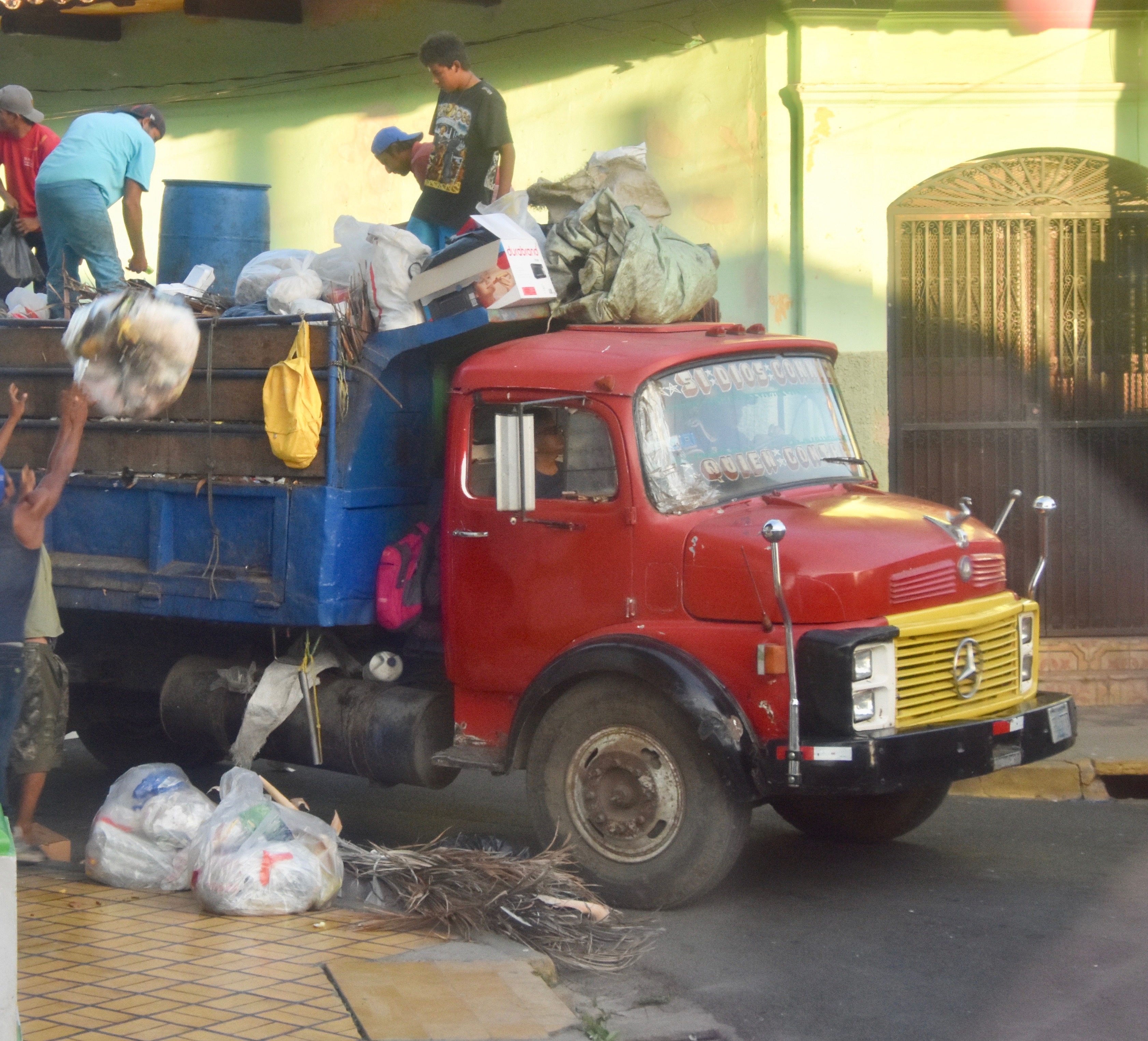
The Roads are Good
The three principal cities of Nicaragua are the capital Managua and the two colonial cities that flank it on the north (Leon) and south (Granada) and this is where the Adventures Abroad tour was focused. Once you get inside Nicaragua from Costa Rica on the Pan-American highway and get past the lineup of trucks going the other way, it is a very pleasant drive on very good roads. Because most Nicaraguans can’t afford a car, most of the traffic is semi-trailers heading north and easily passed, local buses, lots of motorcycles, horse drawn carts, tuk tuks and pedicabs. Most of the last four travel on the right side of the lane and don’t usually hold things up. The biggest slowdown in Nicaragua was waiting at construction sites where they were widening the highway to four lanes.
In terms of the type of transportation we used, it was a modern bus with room for everyone to have their own row so no one had to sit with their better half unless you wanted to. Our driver Jairo was completely sane and not once did I think we were in imminent danger of a head on collision or a cliff dive.
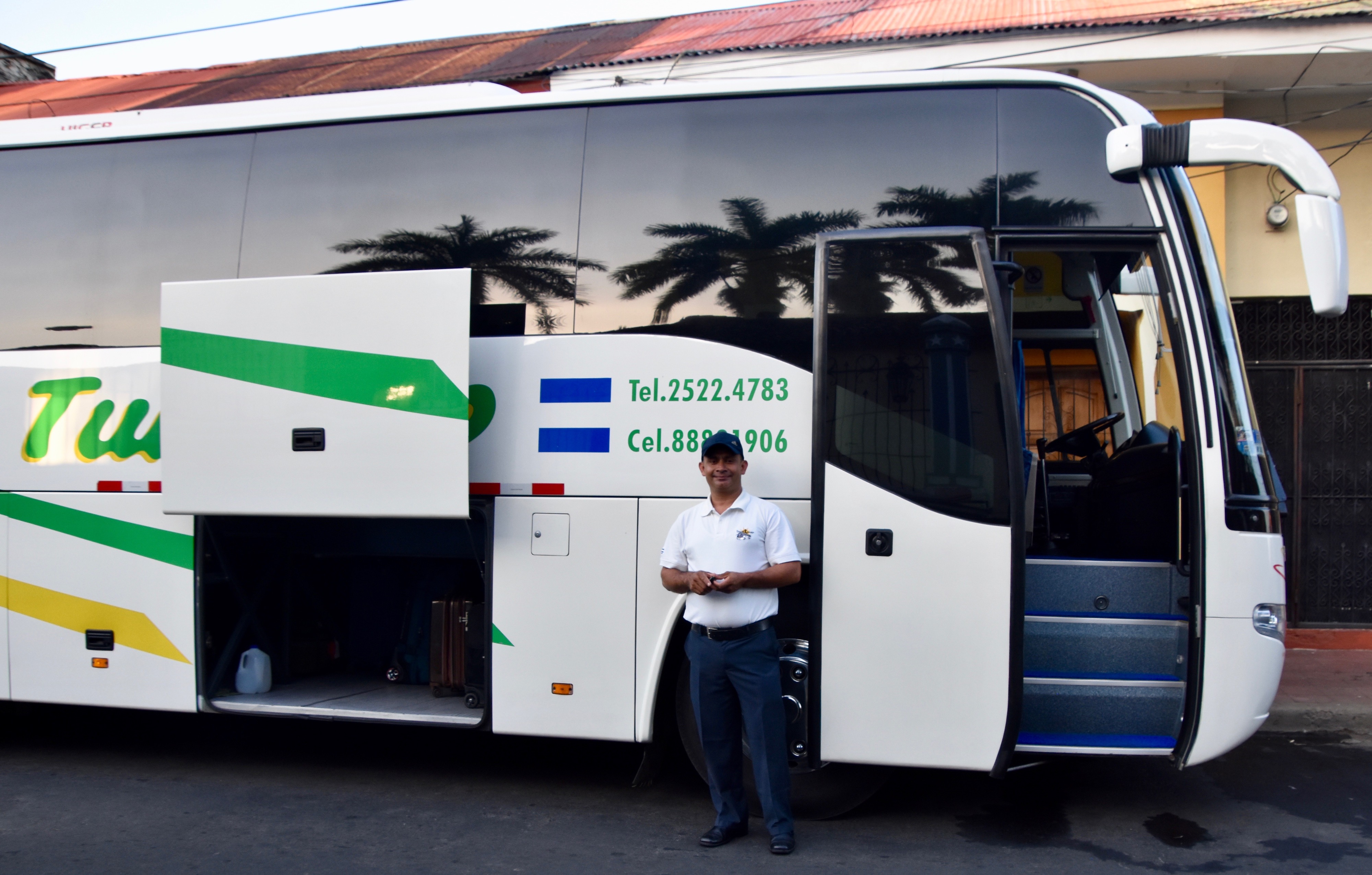
Whether it was fear of attracting the attention of the police or not, Nicaraguan drivers are quite reserved, with little to no horn honking and next to no passing on blind curves.
The Accommodations Were Great
We spent five nights in total in Nicaragua, three in Granada and two in Leon and both places were great, the latter outstandingly so.
In Granada we stayed at the Hotel Casa de Consulado only a block away from the main plaza.

In Leon we stayed in a restored convent, El Convento that had one of the most interesting collection of art and artifacts I’ve seen in any hotel. I plan to do an entire post on this place.
Both hotels had decent internet, pools and hearty breakfasts.
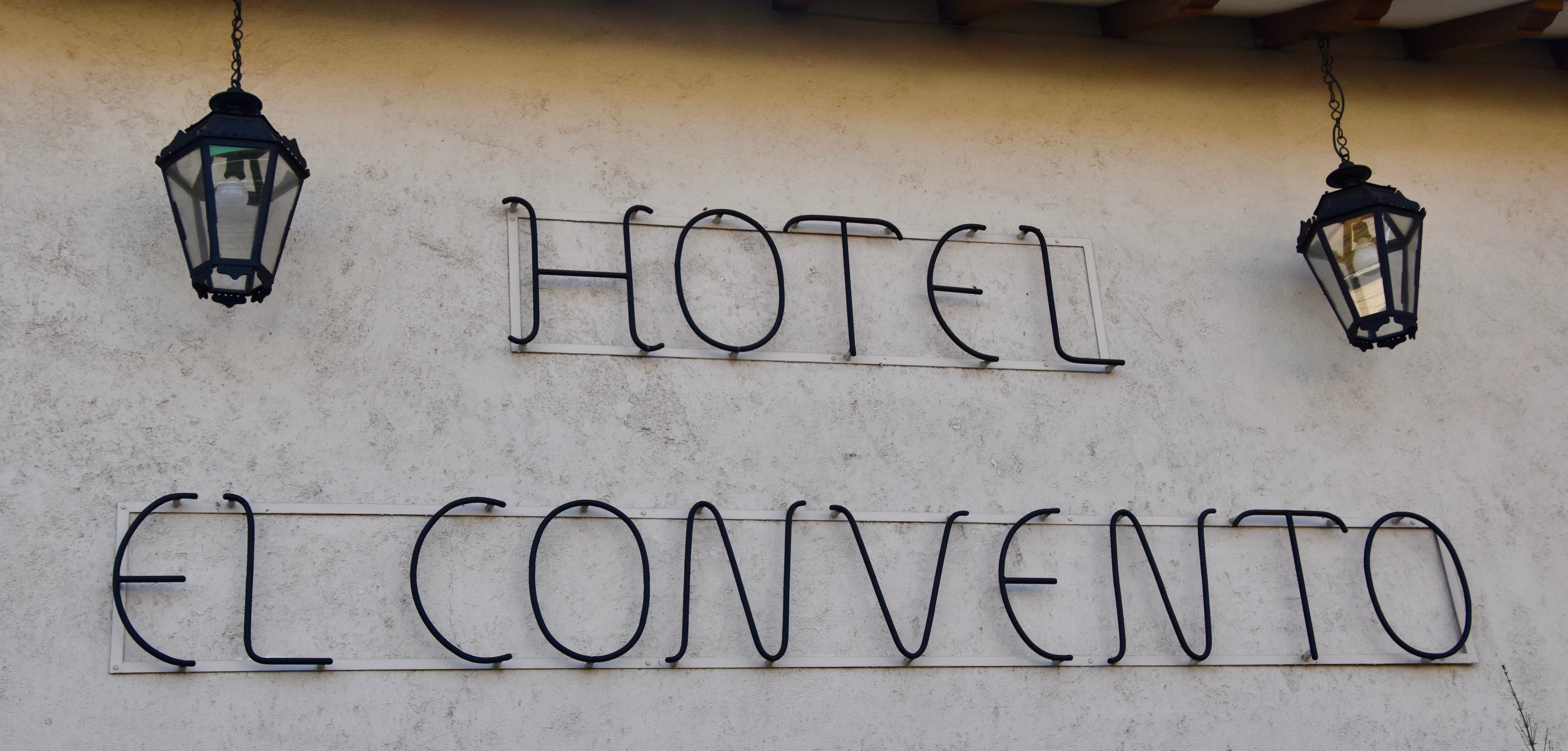
The Food was also Great
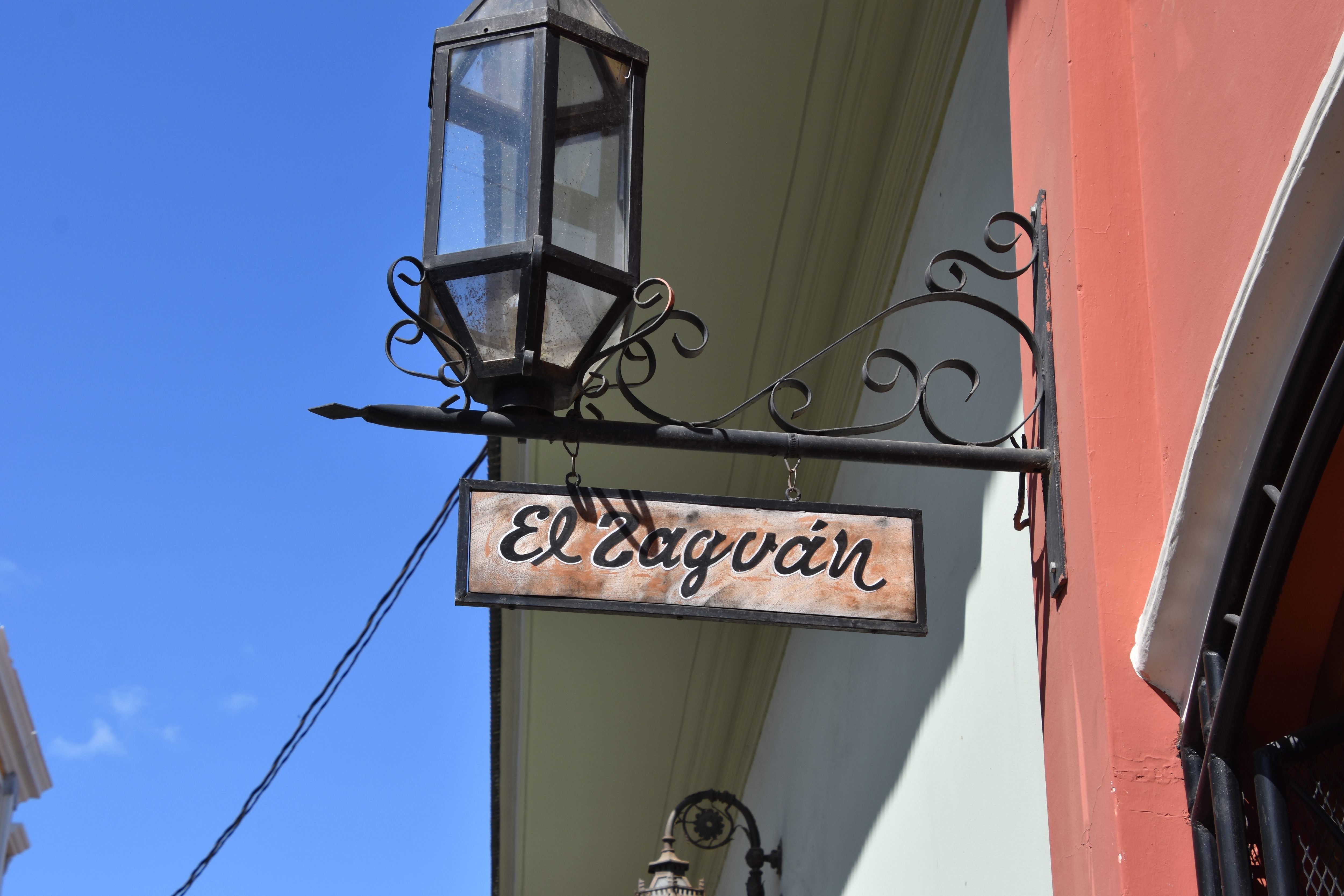
We did not have a bad meal in Nicaragua and had several that were excellent including the first night in Granada when we had a variety of steaks at El Zaguán. I usually avoid steaks in third world countries because they are often tough as the proverbial shoe leather, but Victor chose this place and the filet with jalapeno sauce was remarkable.
On the island of Ometepe we lunched at El Paraíso along with the magpie jays and I’ve never had a tastier chicken kabob skewer anywhere.
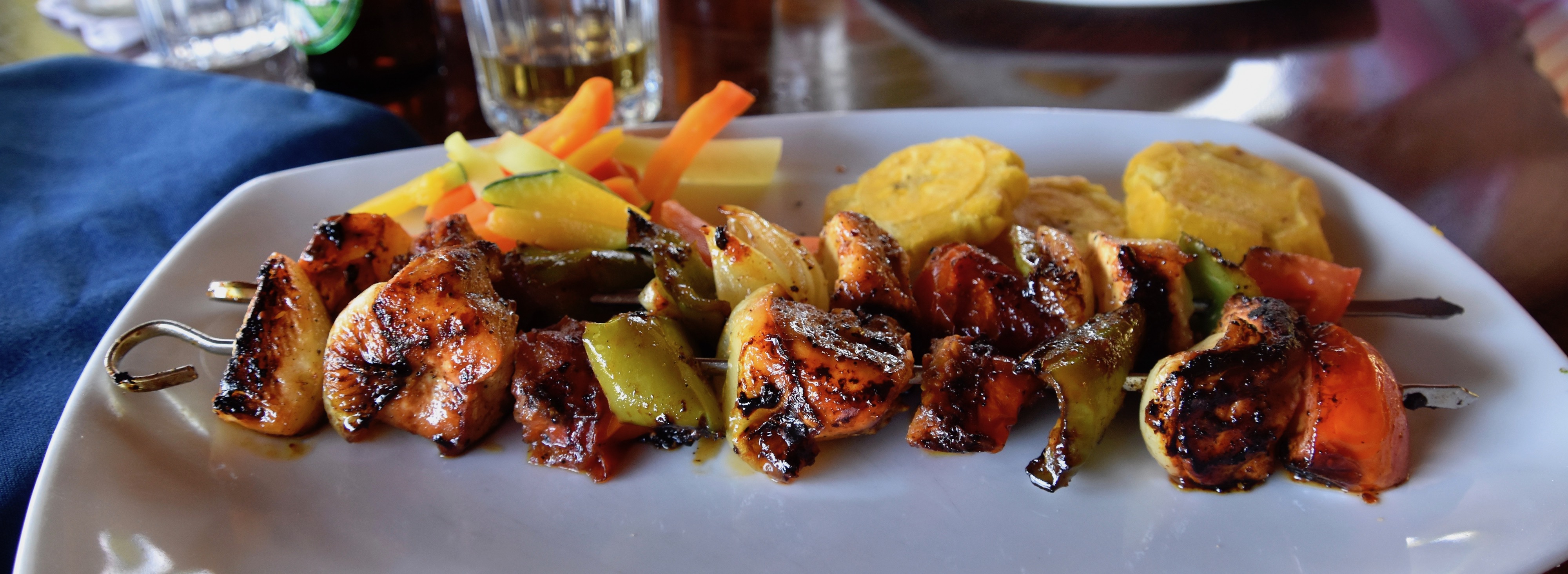
Sandino is Everywhere
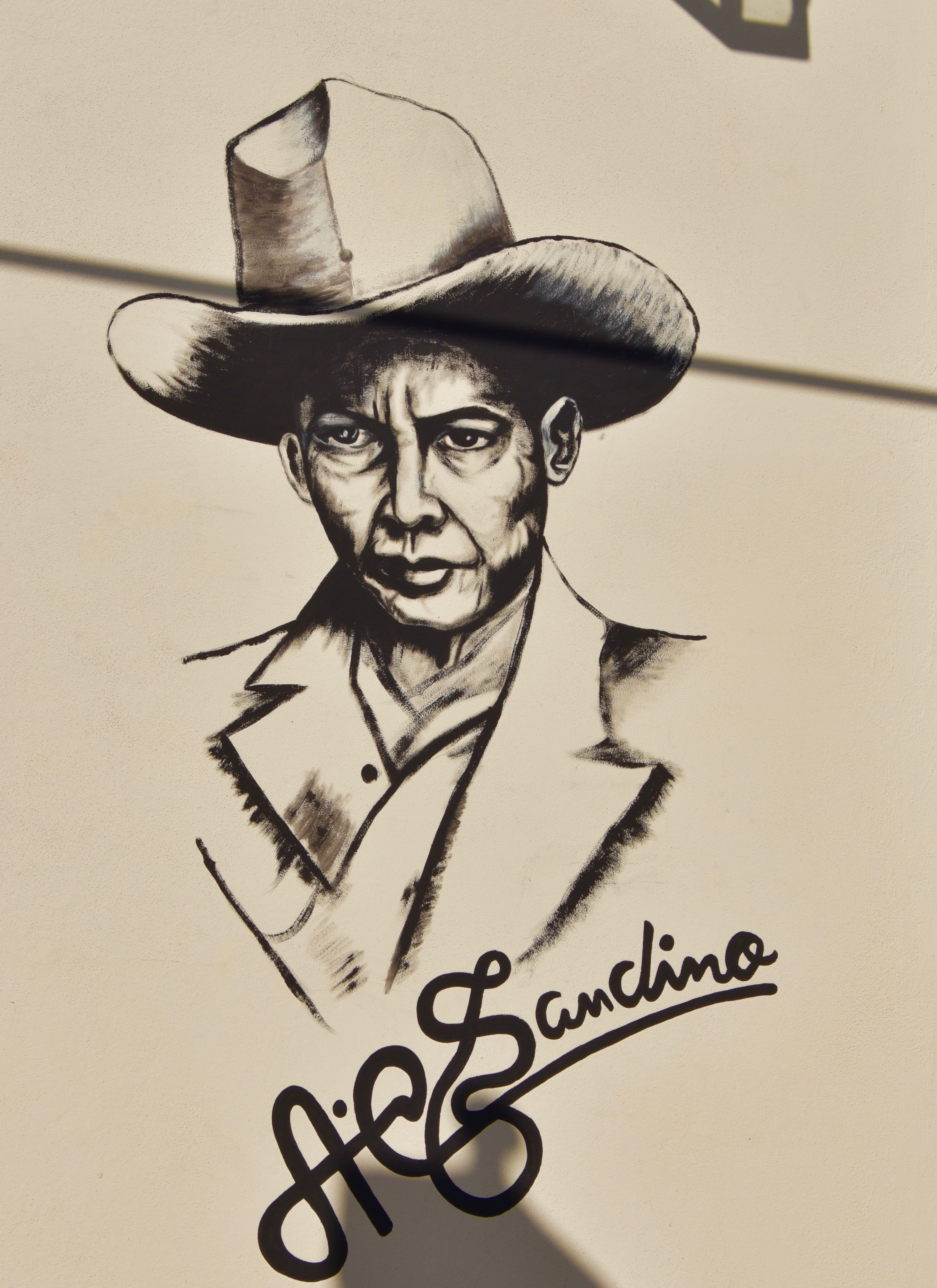
Augusto César Sandino or just Sandino as most people call him, is a national hero to the Nicaraguan people and maybe second only to Che Guevara as a figure of resistance to American Imperialism in Latin America. Between 1927 and 1933 he led a guerrilla campaign against the occupation of Nicaragua by United States Marines and unlike most of these undeclared wars, the underdogs won and in 1933 the marines left, leaving an elected government in place to which Sandino pledged loyalty. Unfortunately for Sandino and all of Nicaragua the marines were replaced by a National Guard headed by Anastasio Somoza Garcia who would go on to assassinate Sandino and establish a family dictatorship that lasted 55 years.
The Somozas were eventually ousted by Daniel Ortega and his Sandinistas who, of course, took their name and cause from Sandino. Today, everywhere you go in Nicaragua you will see tributes to Sandino including some giant black cutouts very much like the bulls you see in Spain. From what I can gather he was a true patriot and not a wannabe dictator like Ortega turned out to be.
Toña is the Beer to Drink
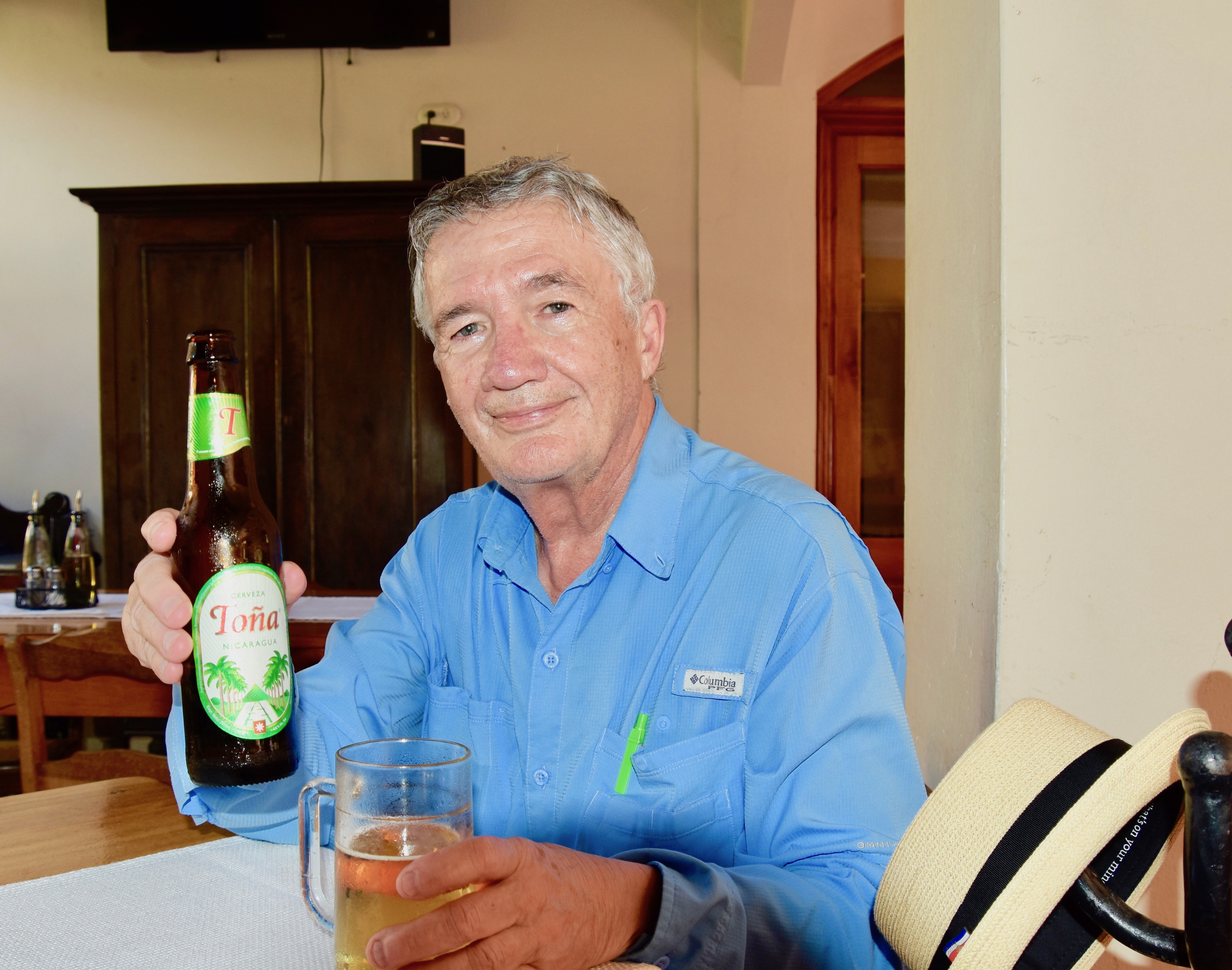
On a lighter note, there are a few beers available in Nicaragua, but Toña (pronounced tone-ya) is definitely the beer I saw most Nicaraguans drinking despite a bigger advertising campaign for Victoria Classico. It is a typical light lager of Latin America with just enough bitterness to make it flavourful and almost excessive carbonation that can handle temperatures close to freezing which is the temperature that most Nicaraguan coolers seem to be. So don’t worry, you won’t have to settle for crap like Coors Light or Bud in this country. In fact I never saw any for sale.
Nicaragua is Extraordinarily Beautiful

Nicaragua is unique among Central American countries in having a combination of both volcanoes and the second largest freshwater lake in Latin America, which creates a landscape like none other on earth. Coming from a country with despite its massive size has no active volcanoes, I couldn’t take my eyes away from the Nicaraguan ones, particularly Concepcion and Momotombo which are what a proper volcano should look like; almost perfectly conical with a little puff of smoke coming out of the top. There is no other place on earth that you can get a photo like the one above.
Aura Munguia is a Great Guide
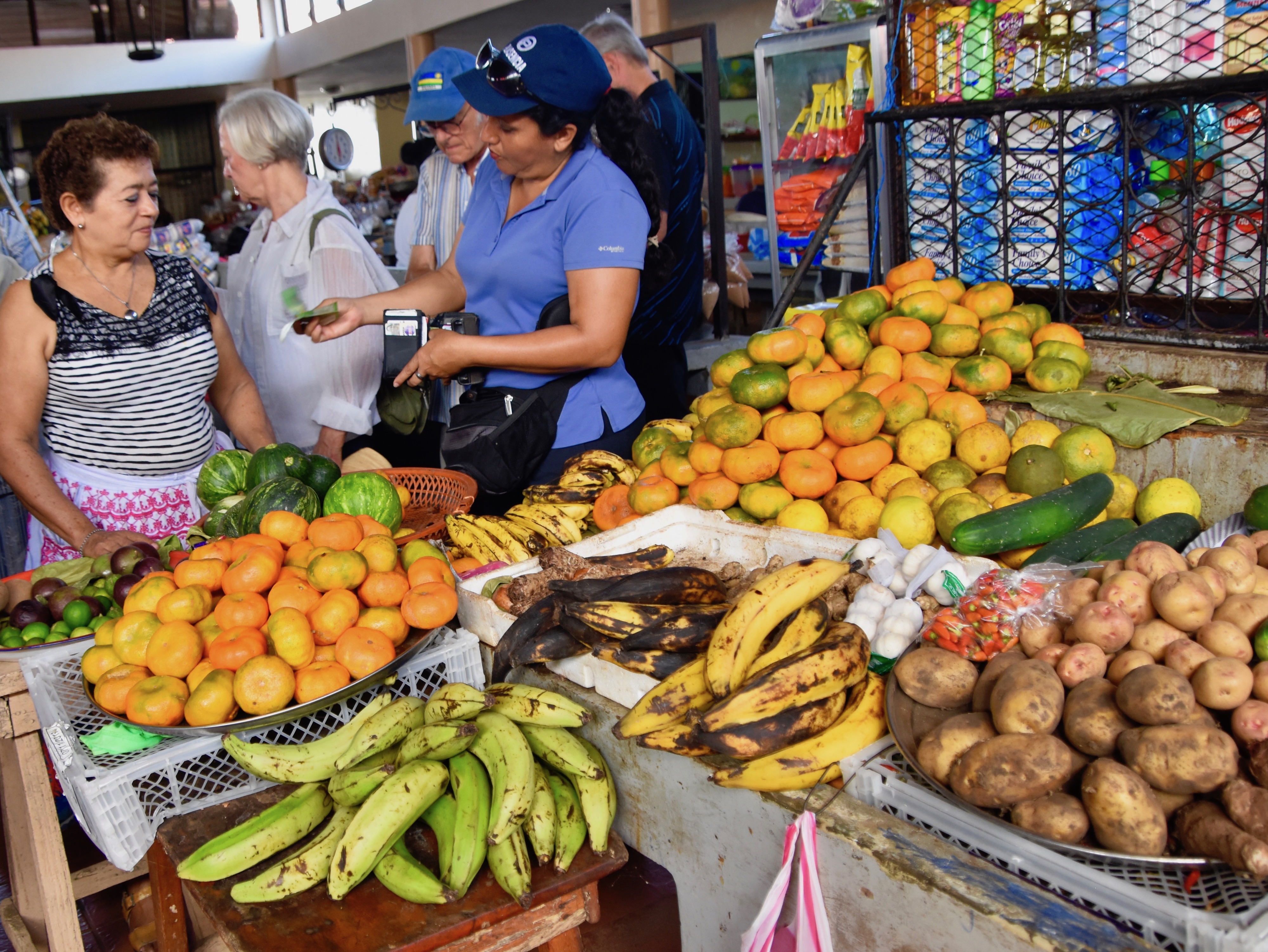
From the moment she greeted us at the Nicaraguan border and guided us through the customs procedure until we said goodbye at the Managua airport Aura Munguia proved herself one of the best local guides Adventures Abroad has ever hired. Her English was very good, her knowledge of all matters Nicaraguan beyond question and most of all, her passion for her country made her the perfect ambassador for this nation. If you are contemplating a trip to Nicaragua I urge you to get in touch with Aura at [email protected].
In summary, as long as Nicaragua remains stable and you can put aside your qualms about its government, it is more than worth visiting.

